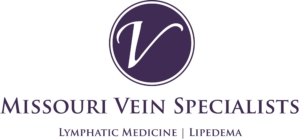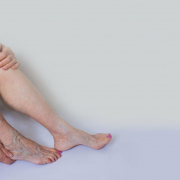What Is DVT?
Deep vein thrombosis (DVT) occurs when a blood clot forms in a vein that is located deep inside the body. This type of vascular clot is called a thrombus, and the danger is that the clot can dislodge and move up to the lungs, causing a pulmonary embolism – which is a potentially fatal blockage.
These blood clots typically occur in the legs or pelvis. They tend to develop due to an underlying medical condition or a lack of movement or exercise. Let’s talk about what DVT is and who you can talk to in order to have yourself evaluated and possibly treated to prevent DVT from happening to you.
Are There Any Symptoms of DVT?
Those who experience a DVT may not manifest physical signs at all. Only about 50% of people with this condition show symptoms.
However, those who do show signs will typically experience one or more of the following near the affected area:
- Swelling
- Pain (including a cramp, soreness, or throbbing)
- Dark or red area on the skin
- Warmth
- Tenderness
What makes DVT serious is that, if it is left untreated, the blood clot can block blood flow in the lungs and decrease oxygen levels in the blood. Signs of a blockage in the lungs include:
- Chest pain that may worsen as you take deep breaths or cough
- Shortness of breath
- Lightheadedness or dizziness
- Coughing up blood
- A rapid or quick pulse
What Causes DVT?
Without medical treatment, clotting in a vein may occur due to the following reasons:
- Inactivity or limited mobility. Sitting or lying down for extended periods makes you more susceptible to blood clots, especially in the legs. People who have been injured or have had surgery are especially encouraged to move around in order to prevent a DVT, because their inclination is to rest and not move enough.
- Narrowed blood vessels. The walls of damaged or injured blood vessels can become narrow, hindering proper blood flow. This can lead to a clot.
- An operation may cause incidental damage to blood vessels, leading to a blood clot.
- Certain medications can also increase the risk of a clot forming.
Risk Factors
Numerous factors can put you at a higher risk of developing a DVT, including the following:
- Blood-clotting disorders. Having a condition where your blood clots quickly can make you more likely to develop a DVT. These disorders may be hereditary.
- A family history of DVT. You are more likely to develop a DVT if a blood-related family member has also experienced it, particularly first-degree relatives (parents, siblings, children).
- Obesity or being overweight. The extra weight can increase pressure on the veins in your .
- While pregnant, the extra weight can put more pressure on the veins in your legs and pelvis. This risk may continue for up to six weeks after you give birth.
- Although DVT can develop at any age, those who are above age 60 are more likely to experience it.
- Being a smoker puts you at an increased risk of many health issues, including DVT. Smoke can damage the lining of your blood vessels and adversely affect circulation.
Vein Specialists in KCMO
If you are in a high-risk category of getting deep vein thrombosis or would just like to have an evaluation to check your vein health, the medical team at Missouri Vein Specialists is here for you.
Dr. Scott Darling has years of experience and knows how to help you get your condition under control, and he can also remove your varicose veins and spider veins.
If you have any questions about what we offer or would like to schedule an appointment, contact our caring team today by calling us at (816) 792-3400 or fill out our online form. We look forward to being your healthcare partner!












